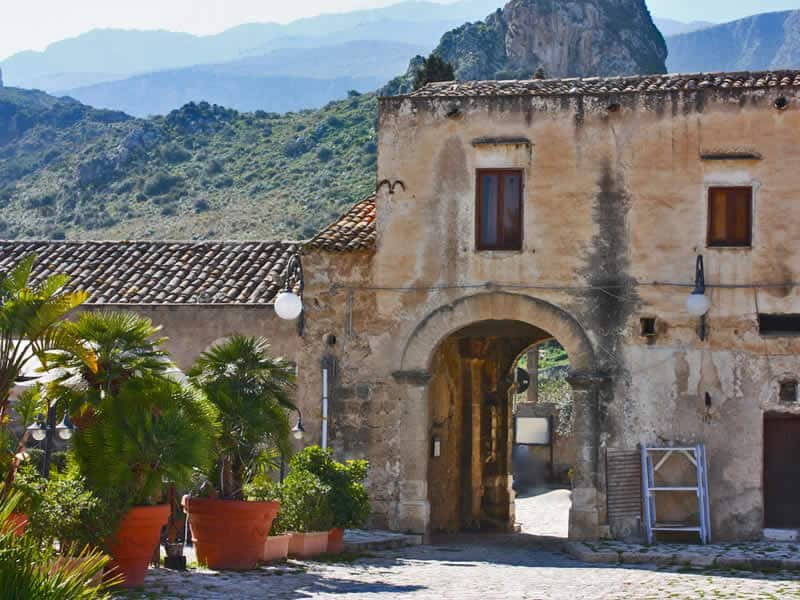Squares and historic neighborhoods
Scopello Village, Scopello Baglio
The name itself, derived from the Greek Chiteja, refers to tuna fishing, which was one of the main economic activities in the area until the 1980s. Little remains of the ancient Cetaria, but it may correspond to the Roman ruins near the Tonnara di Scopello, along the coast from Vitaloca to Cala Alberelli.
Today, cobblestone streets, houses, and dry stone walls make the village of Scopello unique, surrounding a marvelous eighteenth-century baglio built on a cliff that still dominates the sea below, the tuna fishery, and the sea stacks.
The baglio, still enchanting to visitors, is a quadrangular complex with an arched entrance, dry stone walls, a watering trough, and an ancient oak tree dominating the courtyard. The courtyard once accommodated goods, livestock, and carriages; today, it is filled with shops and dining spots.
Narrow alleys and stone-paved streets, bearing the evident marks of carriage passage, lead away from the courtyard.
Well-maintained houses and streets create a magical atmosphere that evokes the past. Strolling through, you’ll encounter pergolas with hanging vines, typical shops that make walking visits enjoyable.
